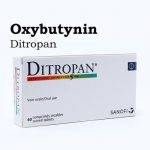Tapioca: What Is It and Is It Good For You?
Tapioca is a versatile cooking product derived from the cassava plant. It’s gluten-free but not very nutritious.
Tapioca comes in various forms, including dehydrated powders and pearls.
Dehydrated tapioca has a long shelf life. When rehydrated and cooked, it becomes a pale, translucent jelly. While it’s safe to eat and gluten-free, it lacks nutritional value.
Where does tapioca come from?
Tapioca comes from the cassava plant, scientifically known as Manihot esculenta. It provides a significant source of sun-derived calories in the form of carbohydrates, and the leaves can also be a valuable source of nutrients when cooked.
Cassava is commonly grown and used in:
Cassava extracts have applications beyond the food industry. They’re used in manufacturing processes, such as papermaking and glue production.
How is tapioca made?
Tapioca is made by preparing the cassava root, which involves applying heat to rupture the starch grains and create irregular tapioca masses.
These masses can be further processed by baking to create flaked tapioca. Alternatively, they can be ground to produce granulated tapioca, also known as manioc or manioca.
Another option is to turn tapioca into pellets. Pearl tapioca, commonly used in bubble tea, is made by forcing hydrated tapioca through sieves with various hole sizes.
What are the nutrients in tapioca?
Tapioca is primarily a source of starchy carbohydrates and lacks proteins and most micronutrients.
In 100 grams of dried tapioca pearls, you can find:
- 88.7 grams of carbohydrates
- 3.35 grams of sugar
- 0.19 grams of protein
- 0.02 grams of fat
- 0.9 grams of fiber
- 20 milligrams of calcium
- 1.58 milligrams of iron
- 1 milligram of magnesium
Overall, tapioca is more filling than nutritious.
Fortunately, some types of dried tapioca can be fortified with soybean flour. This increases the nutritional content without compromising its long shelf life.
Fortified tapioca contains higher levels of protein and micronutrients like calcium, iron, and magnesium.
QUESTION
Are all types of tapioca safe for your health?
Before consuming tapioca products, it’s essential to consider some health concerns.
Cassava contains cyanogens, including the poisonous molecule cyanide. Proper processing is necessary to make cassava products safe for human consumption.
Most tapioca products in the U.S. are regulated and properly processed, but consuming improperly processed tapioca in large quantities can lead to severe health issues, with reported cases of fatalities in Africa.
In the U.S., a common health concern is the potential for allergic reactions to tapioca and other cassava-based products, particularly in individuals with latex allergies. These allergies can cause problems like anaphylaxis, a severe allergic reaction.
Another health concern arises when cassava products form a significant portion of one’s diet. In such cases, a lack of protein and micronutrient supplementation can result in malnutrition, especially in growing children.
Additionally, a little-understood neurodegenerative disease called konzo is associated with consuming high amounts of processed cassava products like tapioca. This disease causes irreversible nerve damage and is a significant problem in sub-Saharan Africa.
The development of konzo is believed to be linked to food toxins found in cassava, although the exact cause is not yet fully understood.
Is tapioca gluten-free?
Tapioca serves as a versatile gluten-free alternative in baking, which is particularly important for individuals with celiac disease. Gluten, found in wheat, barley, and rye, is absent in cassava and tapioca. Other gluten-free food sources include:
You can combine tapioca starch with these ingredients or their derivatives to create safe food options for individuals with celiac disease.
Can you use tapioca for baking?
Tapioca flour is a practical baking alternative with a slightly sweet taste and high starch content. It should not be the sole source of carbohydrates in baked goods. Mixing it with brown rice flour or quinoa flour, both gluten-free ingredients, enhances the texture.
A small amount of tapioca can add a crispy texture to the outside of baked goods while keeping the insides moist. It also serves as a great thickening agent in soups, sauces, and liquidy pies, providing a tasty gluten-free alternative to pectin and other starch-based thickeners.
Is tapioca in bubble tea good for you?
Bubble tea, which often includes large tapioca pearls, is a popular drink. Green and black teas, the base of bubble tea, are generally considered beneficial for health and can lower the risk of various diseases.
However, the addition of non-dairy creamers and high-calorie, high-sugar additives in bubble tea can be problematic. A basic milk tea with tapioca pearls contains eight teaspoons of sugar, surpassing daily sugar recommendations for adults.
Tapioca pearls have the highest calorie content among add-ins, typically providing about 156 calories per serving. Healthier add-in options include aloe vera and white pearls, which have significantly fewer calories.
While you don’t need to entirely eliminate bubble tea with tapioca pearls, it’s important to limit consumption and consider the high sugar and caloric content before indulging.
References:
Brain Research Bulletin: "Konzo: a distinct neurological disease associated with food (cassava) cyanogenic poisoning."
Britannica: "Tapioca."
Children’s National: "Tapioca Flour: A Gluten Free Flour for Baking."
Critical Reviews in Food Science and Nutrition: "Cassava as a food."
Food and Nutrition Bulletin: "A comparative evaluation of the macronutrient and micronutrient profiles of soybean-fortified gari and tapioca," "Chronic poisoning by hydrogen cyanide in cassava and its prevention in Africa and Latin America."
Johns Hopkins Medicine: "Dietary Changes for Celiac Disease."
Journal of Investigational Allergology and Clinical Immunology: "Allergy to cassava: a new allergenic food with cross-reactivity to latex."
Mount Alvernia Hospital: "What’s In My Bubble Tea?"
U.S. Department of Agriculture: "Tapioca, pearl, dry."
Veterinary and Human Toxicology: "The toxic effects of cassava (manihot esculenta grantz) diets on humans: a review."


